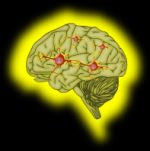
Logical Fallacies
https://yourlogicalfallacyis.com
An example of Appeal to Emotion
The Colbert Report
Get More: Colbert Report Full Episodes,Video Archive
An example of a False Analogy
The author compares texting to the telegraph, which are nothing alike.

An example of a False Analogy
The author compares teachers to the entire private sector. A proper analogy would have been to compare public school teachers to other public workers like police officers or firefighters, or they should have compared public school teachers to private school teachers fired for incompetence.
"A TEACHER in California has a one in 125,000 chance each year of being sacked for incompetence. In this respect, Californian teachers’ jobs are about 3,750 times more secure than those of private-sector workers. Contracts make it almost impossible to fire duds. And if a dwindling population or tight budget means lay-offs are necessary, schools are forced to fire the newest teachers rather than the worst ones. The system is hardly designed to foster excellence."
The Economist, June 14, 2014Burden of Proof Video
False Cause: Correlation Is Not Causation
False Cause: Delusional?
Evidence - Burden of Proof
That which can be asserted without evidence can be dismissed without evidence
—Euclid
In God we trust, everyone else bring data.
--Mayor Michael Bloomberg
Types of Reasoning
- Deductive Reasoning
- Also known as the Socratic method and used by lawyers. We use a chain of logic to prove conclusions based on given facts, often using if...then statements
- Inductive Reasoning
- Used in science and getting to the truth. We look at specific examples made through primary or secondary observations and draw conclusions from them. Examples include Gravitational and Evolutionary Theory. We look for counterexamples. If no counter examples are found, we accept the theory as the truth.
- Danica McKellar at Science Friday
The problem with Deductive Reasoning
Anectodal Evidence
An anecdote is a single story or example. It is the worst form of evidence because one example doesn't prove anything. It cannot be used to extrapolate out to a larger population any kind of predictable theory. Anecdotes can be used for illustrative purposes or to get people interested in the topic. However, it isn't good evidence.
Statistical Evidence
This is the best form of evidence, so long as certain methods are followed.
- Subjects need to be selected at random from the general population of those being studied. Volunteers for "treatments" are biased.
- Subjects and those administering the treatment need to be blind as to whom is receiving the treatment. Double-blind.
- Subjects need to come from a large sample size.
- Half of the subjects should be treated and the other half treated with a placebo.
- If statistics come from survey questions, survey questions should not lead the subject.
Presenting statistics
- Statistics should be presented as both raw numbers and ratios or percentages.
- Raw numbers provide a sense of scale.
- Percentages and ratios provide context: 70% of America's debt is owed to itself.
- A percentage is a number out of 100: 48% of people surveyed, 23% of all students.
- A ratio is a number out of another number: 3 out of 5 dentists, 1 in 10 babies.
Quotations
Quotations provide evidence when they come from actual experts and not self-appointed experts. So, who is an expert?
- Experts are people who have 10,000 hours of effortful practice in their field.
- Experts have proven their expertise through practice or publishing in a peer-reviewed journal
Analogies
Analogies are comparisons between two similar things. Similarities should be pointed out.
- Repeat - Two similar things
- Repeat - Two similar things
- They are often used to stoke emotion and anger.
- "Assault" Weapons
- Abortion = Genocide
- Death Tax
Themes
Black -
White -
League -
Sky -
Beige -
Simple
Serif -
Night -
Moon -
Solarized -
LE (default)